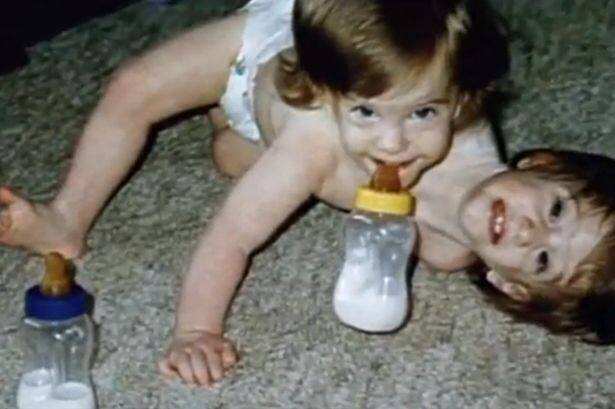
"They will do whatever they can for their kids and they love them no matter what."Ībby and Brittany say they are "nervous" and know there are challenges ahead, such as finding work and launching out on their own. "We have been truly in awe of the parents who have brought their twins to us," he says. Surgery is still rare and only half survive.įamilies with twins require much support. Usually, they share organ systems that cannot survive independently. When conjoined twins are not separated, there are "strong medical reasons not to do so," according to Moir. How intimately and intricately they are designed."Īs for the Hensel twins, when Abby drinks caffeinated coffee, Brittany can feel it immediately and her heart, which is weaker, races.Īs for their emotional bond, one friend remarks, "They finish each other's sentences - they both know what the other is thinking and what she is going to say. You give one a shot and the other is immunized, one catches a cold and so does the other. "They share a body throughout their development in utero and it continues after they are delivered. The psychological bonds between conjoined twins are well-known. "Their own individual uniqueness is a joy to watch." "These kids show a fusion of spirit, where you see their separate personalities, even though they are conjoined," he says. Moir has seen the same with his patients. Their friends laugh when they overhear the twins "in the background bickering" over the choice of a blouse or a pair of shoes. But Brittany is more "laid back and chill" and has a "weird" sense of humor.Ībby wins some arguments and Brittany wins others. Abby is the more gregarious and outspoken of the two, according to their large group of friends. Like Abby and Brittany, conjoined twins have distinct personalities. There are no genetic or environmental influences that cause conjoining, he says, "just a happy accident of embryos." "They are the minority, but these girls are wonderfully blessed," he says.Ĭonjoining occurs in the earliest weeks of gestation, according to Moir, "sometimes before the mother even knows she is pregnant." He does not know the Hensel women, but says their active lifestyle is "extraordinary." Moir is currently treating five sets of conjoined twins and says they are "really looking forward to leading normal lives." "But the chance of a mother delivering a set of conjoined twins and their surviving is one in a million." Christopher Moir, a pediatric surgeon and medical director at the Mayo Clinic's Children's Center. "All conjoined twinning is really uncommon," says Dr. They develop from the same fertilized egg, and they share the same amniotic cavity and placenta. About 70 percent of conjoined twins who survive are female.Ĭonjoined twins are genetically identical, and are, therefore, always the same sex. "They are teamwork and I have a lot of respect for that."Ĭonjoined twins occur once every 200,000 live births, according to the University of Maryland Medical Center, but about 40 to 60 percent of them are stillborn and only about 35 percent survive one day. "They could choose their attitude toward life and they face it," says one friend in the first episode of the show. They have a large circle of college friends, all of whom are in awe of the twins' enthusiasm and capabilities.

We want to work it so each of us is happy and we find a happy medium." "When it comes to decisions, there are compromises we have to make," says Abby.

Cracking an egg with ease, their hands are in perfect coordination. The TLC docu-series follows the women's social lives as they prepare to graduate from Minnesota's Bethel College and embark on travel to Europe searching for a teaching job.Īs they ready for their birthday party with college girlfriends, the twins pull groceries off the shelf, shop, blow up balloons and make a cake. "The most amazing thing about us is we are like everyone else," they chime together. We were raised to believe we could do anything we wanted to do." "But our parents never let us use that as an excuse. "People have been curious about us since we were born, for obvious reasons," say the twins in the first episode of the eight-week series. But by age 6, they were appearing on "Oprah" and the cover of Life magazine. When the twins were born in 1990, their parents were told the babies might not survive the night. Their updated story, "Abby & Brittany," told in documentary form when they were 12 and again at 16, will air Tuesday, Sept.


 0 kommentar(er)
0 kommentar(er)
